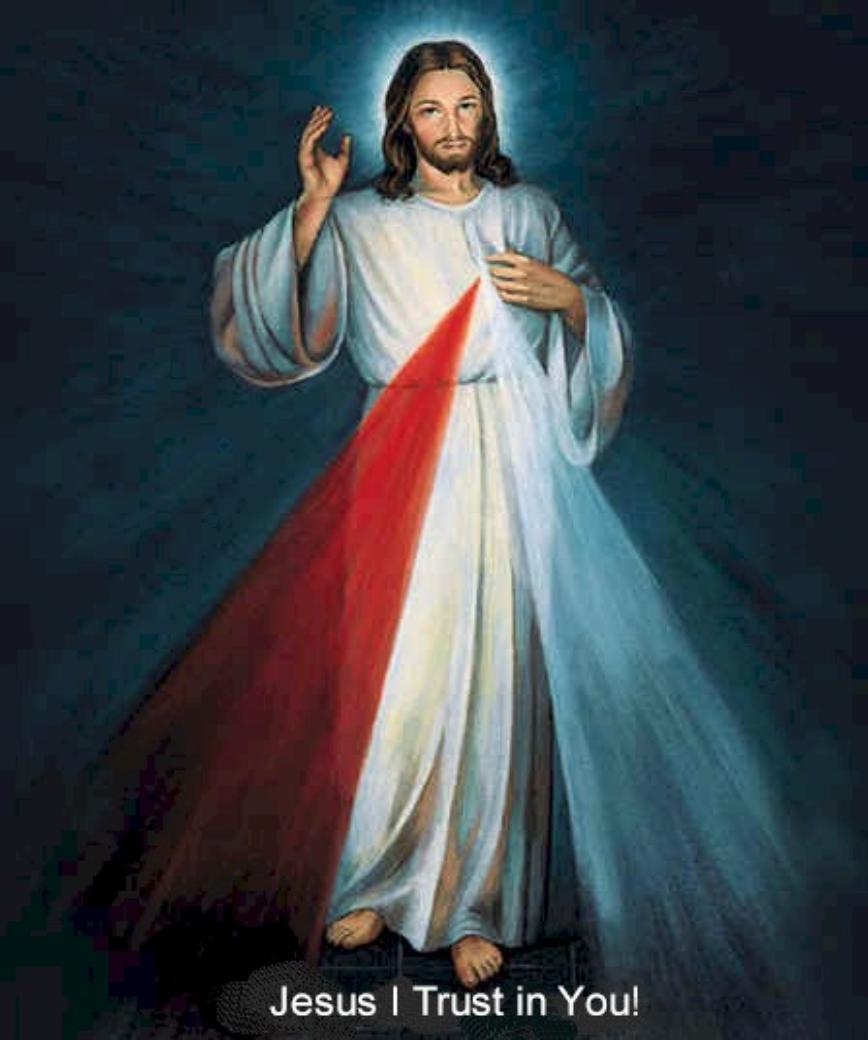Divine Mercy is both a message and a devotion. Its message is simple. It is that God loves us — all of us. And, he wants us to recognize that His mercy is greater than our sins, so that we will call upon Him with trust, receive His mercy, and let it flow through us to others. Thus, all will come to share His joy.
The Divine Mercy message is one we can call to mind simply by remembering ABC:
- A - Ask for His Mercy. God wants us to approach Him in prayer constantly, repenting of our sins and asking Him to pour His mercy out upon us and upon the whole world.
- B - Be merciful. God wants us to receive His mercy and let it flow through us to others. He wants us to extend love and forgiveness to others just as He does to us.
- C - Completely trust in Jesus. God wants us to know that the graces of His mercy are dependent upon our trust. The more we trust in Jesus, the more we will receive.
This message and devotion to Jesus as The Divine Mercy is based on the writings of Saint Faustina Kowalska, an uneducated Polish nun who, in obedience to her spiritual director, wrote a diary of about 600 pages recording the revelations she received about God's mercy. Even before her death in 1938, the devotion to The Divine Mercy had begun to spread.
The message and devotional practices proposed in the Diary of Saint Faustina and set forth at TheDivineMercy.org, run by the Marians of the Immaculate Conception are completely in accordance with the teachings of Church and are firmly rooted in the Gospel message of our Merciful Savior. Properly understood and implemented, they will help us grow as genuine followers of Christ.
In fact, it was a central focus of the papacy of St. John Paul II. Indeed, that is why his canonization took place on Divine Mercy Sunday in 2014. Divine Mercy Sunday is the first Sunday after Easter...a feast Jesus asked that we recognize, and JPII made official in 2000, at the canonization of St. Faustina. It's all part of a very remarkable story!
We invite you to spend time to learn more of this story, and of the mercy of God. As you continue your path of healing from marital separation and/or divorce, this is perhaps one of the best things you can do for yourself and those you love. Its also why it is a central focus of our apostolate. To start, here are three easy first steps:
- Pray the Chaplet of Divine Mercy. This is a prayer given directly to us by Jesus, through His appearances to St. Faustina. You can pray the chaplet on any normal set of rosary beads.
- Keep the Image close by. Jesus wants us to venerate this image, which has two rays flowing from His Heart. The red represents blood; the bluish-white, water. Both flowed forth from His side when it was pierced as He hung on the cross. If you would like a full size image or some pocket-size ones, contact us. I will send some to you.
- Trust. If nothing else, you must trust in the immeasurable mercy of God. Too many people fall away because they come to think that they are not "good" enough, or that mistakes made in their past are beyond God's forgiveness. This saddens God far more than any actual "sin" we can commit--because it shows that we are not trusting in His Mercy. That is why the prayer along the bottom of the image is so important: "Jesus, I Trust In You."


